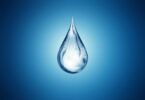Exclusive Interview: H2O Global News’ Sion Geschwindt Spoke with ATi UK Executive Director, Garry Tabor, about how investing in smart water networks can foster much-needed public trust in tap water
Not all is well with the water sector. Aging infrastructure and slow uptake of new technology is leading to excessive leakage, quality risks, and environmental damage – harming public confidence in water utilities.
Controversies like the Flint, Michigan, water crisis, in 2014, have done nothing to foster trust in tap water. The problem is, the public are often left in the dark, lacking accurate and reliable information about water quality.
This is partly why more and more people are turning to bottled water. Marketed as a safer, healthier alternative to tap water, over 600 million households now opt for bottled water globally – and those numbers are growing.
For those living in areas without access to clean tap water, bottled is often the only option. But for billions of people, tap water is still the safest, cheapest and wisest choice. What is crucial is that water utilities equip themselves and their customers with smart and actionable data that give us all the confidence to go ‘back to the tap’.
Bottle mania
We’ve been bottling up beverages for over a century, but it wasn’t until the invention of the miracle plastic ‘PET’ in the 1970s that plastic bottles became the go-to for manufacturers.
By the mid 90s bottled water sales began to take off. Big names like Pepsi and Coke came out with their own brands of water – essentially refiltered tap water packaged in a wonderfully branded plastic bottle.
According to the Wall Street Journal, between 1994 and 2017, bottled water sales soared by 284%. In 2016, sales of bottled water exceeded those of all soft drink brands, combined, with an estimated one million sales per minute globally.
Quick, convenient bottled water beverages have become a feature in most households today, but the impacts of this boom have been staggering.
The plastic pollution problem
Plastic pollution is a serious issue. The biggest offenders are ‘single use’ plastics like coffee cups, straws and – you’ve guessed it – plastic bottles. You buy them, you use them and then you through them away to be recycled right? Wrong.
In the United States, only 30% of these bottles are recycled. Most of the time they go straight to landfill or directly into our environment.
“It’s ironic that bottled water, marketed as safer and cleaner, is contributing to plastic pollution in the very water it comes from.”
PET takes over 450 years to break down, and often releases chemicals that leach into water supplies. When they do eventually break down, tiny plastic particles – known as ‘microplastics’ – end up everywhere; in our water, food and even in our bodies.
It’s ironic that bottled water, marketed as safer and cleaner, is contributing to plastic pollution in the very water it comes from.
Producing plastic also emits huge amounts of CO2 into the atmosphere, and – to add to the irony – uses vast quantities of water.
“We consume 14 billion barrels of bottled water a year, and it takes 3 times more water to produce one bottle than the amount of water that bottle can store,” says ATi UK Executive Director, Garry Tabor.
The maths doesn’t add up
Not only is bottled water harmful to the environment, it makes very little economic sense.
“80% of bottled water is tap water anyway, but is over 400% more expensive,” said Tabor.
Regular bottled water is often marked up by 1000%, with some ‘boutique’ designer brands a whopping 280,000% above the cost it took to produce.
So, if bottled water has so many environmental and economic costs attached to it, why are we still buying it?
That’s a complicated question. On the one hand you have bottled water companies pushing their products as a healthier alternative, and on the other there is rising public concern around contaminants such as lead and PFAS in tap water.
These concerns are understandable. Many water infrastructures are outdated and there have been incidents of water contamination in public supplies across the world.
However, for most people, tap water is the safest, most affordable option. Take the U.S. for instance. It is estimated that 92% of all tap water is in compliance with every single EPA quality standard, all the time.
“I accept completely that there are some parts of the world that have no access to safe water and thus need bottled water,” said Tabor. “But in the Western world there’s no ethical reason why we should use bottled water. From 30 years in the industry, I know how much time and money is spent to make sure that tap water is safe and pure.”
And yet, seeing is believing. As everyday citizens become more informed, and concerned, about health and environmental issues, they’re demanding more data. We all want to know what is in the water we drink.
The reality is that most of the time water utilities cannot provide this data. Couple this with controversies such as the Flint, Michigan, water crisis in 2014, as well as the efforts of bottled water marketers, and it’s clear to see why tap water is getting a bad rep.
“If you can’t reassure the public that the water they drink from the tap is not fit for purpose, you devalue it even more,” said Tabor. “The water industry is siloed and slow to catch up with the digital transformation, but catch up we must.”
Building trust
Tabor is a founding member of ATi UK, a leading provider of engineered, analytical sensor monitoring solutions and data analytics for the water industry.
“Tabor saw the intricate connections between the bottled water boom, outdated water management practices and a lack of public trust in tap water.”
His journey with ATi UK, and within the broader water quality industry, led him to start campaigning to get people ‘Back2Tap’. Tabor saw the intricate connections between the bottled water boom, outdated water management practices and a lack of public trust in tap water.
As the head of a company specialising in water monitoring of public networks, Tabor naturally supports tap water usage, but he’s pragmatic about his positionality.
“Of course, I’ve got an invested interest in monitoring water quality but that shouldn’t prevent me from an opportunity to spread this message,” he said. “After years in the business I started making the connections, and honestly, once I retire, I think I’ll start campaigning full time.”
Until fairly recently, utilities lacked the tools to manage ageing water networks and proactively monitor water quality. However, the digital transformation offers new possibilities for managing water more efficiently and resiliently to proactively safeguard water quality and create intelligent, optimised, ‘Smart Water’ networks.
From source to tap, the Smart Water approach utilises emerging digital technologies like the Internet of Things (IoT), big data, and cloud-based analytics, to mitigate risks and optimise performance. Networks of smart sensors collect real-time water quality data and feed this information to cloud-based analytics software, which analyses these huge datasets and displays them in a way that empowers water managers with accurate and actionable insights.
“Smart Water equips water utilities with real-time data and analytics that allows them to reduce risks, solve problems faster, and give the public peace of mind” – Garry Tabor
Imagine if you bought a car that had no modern safety equipment, you probably wouldn’t trust it all that much, would you? Why should water provision be any different? Water is after all crucial to our wellbeing, therefore, as consumers we should be able to trust that water utilities are using the best technology available to mitigate risk, ensure a safe supply and provide accessible information.
“Smart Water equips water utilities with real-time data and analytics that allows them to reduce risks, solve problems faster, and give the public peace of mind,” said Tabor.
Smart futures
Thankfully the technology needed to transform the water sector is already here. The challenge now is to integrate it into the very fabric of the industry.
In the U.S., the Biden Administration is proposing a total of $111 billion dollars in clean water and drinking water investments, as part of a $2 trillion infrastructure investment scheme. The plan proposes channelling federal spending to several aspects of water quality – including $56 billion toward upgrading and modernizing America’s wastewater, stormwater and drinking water systems.
“Biden’s plan, and others like it, signal a policy emphasis on water modernisation, and the industry must be poised to deliver”
Biden’s plan, and others like it, signal a policy emphasis on water modernisation, and the industry must be poised to deliver. This will require strong partnerships and strategic alliances, involving interdisciplinary collaboration across industries, science and academia.
“Water utilities, consultants, technology companies and hardware and software specialists are already collaborating on smart water innovations,” said Tabor’s colleague, ATi UK’s Technical Performance and Data Analyst, Derek Leslie. “By leveraging big data, analytics and the Internet of Things, key players in the water sector are pro-actively innovating to help solve issues of water scarcity and address the aging water infrastructure.”
An example of a collaborative smart water project is Yorkshire Water’s smart network pilot. The UK water utility is pioneering the application of Digital Twins (DT), Artificial Intelligence (AI) and Operational Technology (OT) solutions to improve understanding of sewer network performance, to reduce sewer flooding and pollution.
“A digital twin is a parallel mimic of a system that enables you to visualise your water network and conduct hypothetical scenarios with no risk,” said Tabor. “It takes all the data gathered from the environment by smart sensors, like rainfall and water quality, and uses AI to predict future scenarios and threats.”
All of this technology might sound complicated, but in a nutshell, it equips utilities with the data and insights required to improve water provision and distribution. In the end of the day, the one who benefits the most – is us.
By expanding smart water networks, building on lessons learnt and fostering cross-sectoral partnerships, the water sector can shed its old skin and transform into a modern industry with a modern mindset, building trust with its partners. In this way, when you open your tap you can trust the best technology, partnerships and personnel are behind the water that flows out.
Do you have an article that you would like to share? Submit your article here or keep up with the latest news from the water industry and wastewater industry by subscribing to our weekly newsletter.







